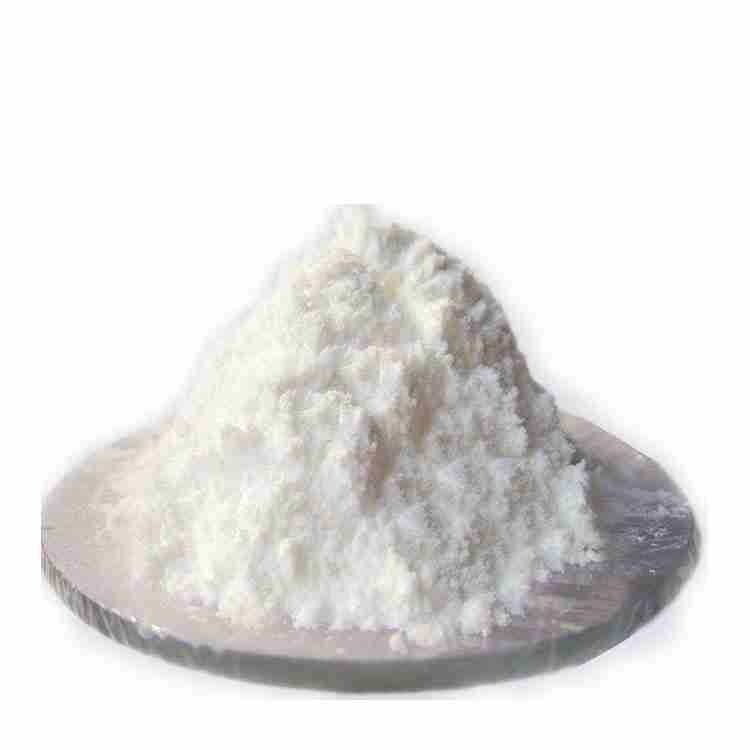Lauramidopropyl betaine CAS#4292-10-8
Lauramidopropyl betaine is a mild, biodegradable surfactant commonly used in personal care products and cleaning formulations. It is derived from coconut oil and is known for its foaming and wetting properties, making it ideal for creating rich lathers. This ingredient is particularly favored for its gentleness on the skin and its ability to cleanse without causing irritation, making it suitable for sensitive skin types. It also contributes to the product’s viscosity and stability.
发送询盘
| Lauramidopropyl betaine Chemical Properties |
| Melting point | >128??C (dec.) |
| density | 1.15[at 20??] |
| vapor pressure | 0.31Pa at 20?? |
| storage temp. | Hygroscopic, -20??C Freezer, Under inert atmosphere |
| solubility | Chloroform (Slightly), Methanol (Slightly) |
| form | Solid |
| color | White to Off-White |
| Water Solubility | 250mg/L at 20?? |
| Stability: | Hygroscopic |
| LogP | 3.54 at 20?? |
| EPA Substance Registry System | 1-Propanaminium, N-(carboxymethyl)-N,N-dimethyl-3-[(1-oxododecyl)amino]-, inner salt (4292-10-8) |
| Safety Information |
| MSDS Information |
| Lauramidopropyl betaine Usage And Synthesis |
| Description | Lauramidopropyl betaine is a new type of special amphoteric surfactant, which belongs to the same series as lauramidopropyl betaine, and is a modified derivative of alkyl betaine. Lauramidopropyl betaine has the characteristics of temperature resistance, acid and alkali resistance, good salt resistance, wide isoelectric point and strong viscoelasticity, etc. It is widely used in oil field oil repelling, leather, daily chemical industry and other fields. As a good viscoelastic surfactant applied to the substrate acidification of oilfield, it can effectively reduce the oil/water interfacial tension and improve the recovery rate of tertiary oil recovery. Also it can be used as conditioning agent, wetting agent, bactericide, antistatic agent, emulsifier, thickener and in self-steering acid system for carbonate acidification. |
| Uses | Lauroylamide Propylbetaine is used cosmetic and hair compositions of enhanced viscosity and clarity. |
| Flammability and Explosibility | Not classified |
| Toxicology | Lauramidopropyl betaine (50% component in cocamidopropyl betaine – as a model for cocamidopropyl betaine) is poorly absorbed from the intestinal tract and through the skin. Rinsing the skin after 10 minutes of contact reduces the absorption even further. Following oral or dermal exposure, there is metabolism of the absorbed material, as indicated by the appearance of a more polar compound in the urine and by the liberation of?14CO2. |
- 2
- 2-diallylpent-4-en-1-amine
- 4
- 95-16-9
- Ammonium sulfamate
- Benzothiazole
- cas:67889-00-3ح2
- cas:83524-75-8 | pigment black 32
- cas:928836-00-4 | 2
- cas:932745-70-5 | 4
- Chemical Minerals
- Coconut diethanolamide
- Daily Chemicals
- discount
- for sale
- General pvc resin
- hexyl D-glucoside
- in stock
- Lauramidopropyl betaine
- LAURIC ACID MONOETHANOLAMIDE
- Petroleum Additives
- Plasticiser
- Ploymers
- price
- PVC
- quotation
- Raw Materal
- Remove term: Petroleum Additives Petroleum Additive
- SODIUM ETHYL 2-SULFOLAURATE
Related Products
Hexyl D-glucoside is a non-ionic, plant-based surfactant derived from renewable resources such as corn or potato starch. It is recognized for its excellent skin compatibility and mildness, making it a preferred choice for formulations in personal care products, especially those targeting sensitive skin. With its superior solubilizing and foaming capabilities, it enhances the sensory experience of the product without compromising its gentleness. Its eco-friendly profile and biodegradability also align with green chemistry principles, appealing to consumers seeking sustainable product options.
Chemical Name: 3-Hydroxybutyric acid
CAS No.: 625-71-8
Molecular Formula: C4H8O3
Molecular Weight: 104.1
Appearance: White powder
Sodium Ethyl 2-Sulfolaurate is a surfactant with a unique combination of properties. It is an anionic compound, derived from the sulfonation of ethyl laurate, which is then neutralized with sodium hydroxide. This results in a product that is highly effective in lowering the surface tension of water, making it an excellent wetting agent and emulsifier. It is commonly used in personal care products, detergents, and industrial applications for its foaming and dispersing capabilities. As a mild and biodegradable ingredient, it is favored for its environmental and skin-friendly attributes, ensuring safety and performance in a variety of formulations.
Lauramidopropyl betaine is a mild, biodegradable surfactant commonly used in personal care products and cleaning formulations. It is derived from coconut oil and is known for its foaming and wetting properties, making it ideal for creating rich lathers. This ingredient is particularly favored for its gentleness on the skin and its ability to cleanse without causing irritation, making it suitable for sensitive skin types. It also contributes to the product’s viscosity and stability.
Chemical Name: Zinc citrate
Synonyms: Zinc citrate trihydrate
CAS No.: 546-46-3
Molecular Formula: C6H8O7Zn
Molecular Weight: 257.5
Appearance: White powder
Product name:HYDROXYPROPYL GUAR HYDROXYPROPYLTRIMONIUM CHLORIDE
Purity:99%
Appearance:Light Yellow Powder
Package:Customized according to customer needs.
Sample:Available
Chemical Name: Quercetin-3-O-sophoroside
CAS No.: 18609-17-1
Molecular Formula: C27H30O17
Molecular Weight: 626.52
Product name:Cyclopentane
Purity:96%
Appearance:White powder
Package:25kg/bag
Sample:Available
Chemical Name: Dehydrocholic acid
Synonyms: Acide dehydrocholique; Triketocholanic acid
CAS No.: 81-23-2
Molecular Formula: C24H34O5
Molecular Weight: 402.53
Appearance: Powder
Chemical Name: o-Xylene
Synonyms: 1,2-Dimethylbenzene; ortho-xylene
CAS No.: 95-47-6
Molecular Formula: C8H10
Molecular Weight: 106.17
Chemical Name: UV-120
Other Name: (2’,4’-Di-tert-butylphenyl 3,5-di-tert-butyl-4-hydroxybenzoate)
CAS No.: 4221-80-1
Molecular Fomula: C29H42O3
Molecular weight: 438.66
Assay: ≥99%(LC)
Chemical Name: Imazalil Sulfate
CAS No.: 58594-72-2
Molecular Formula: C14H14Cl2N2O.H2SO4
Molecular Weight: 395.26
Appearance: Solid


















